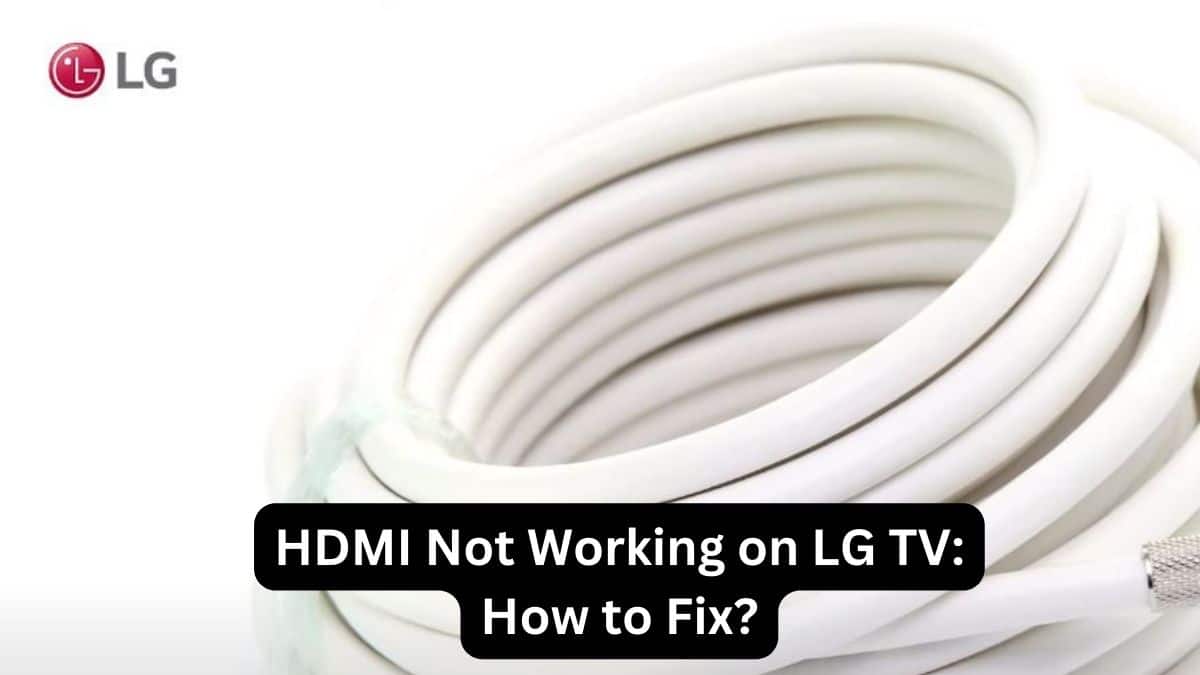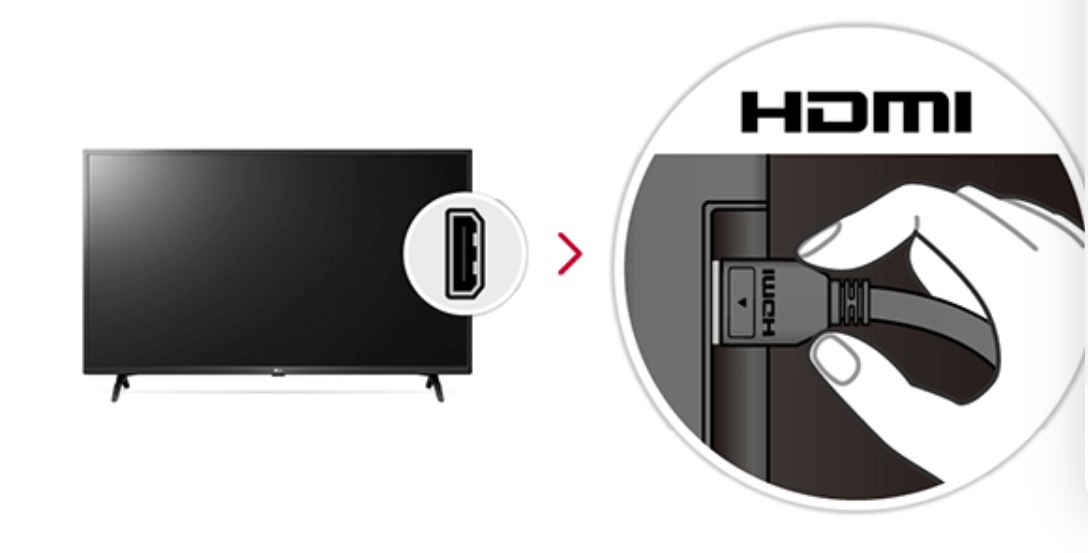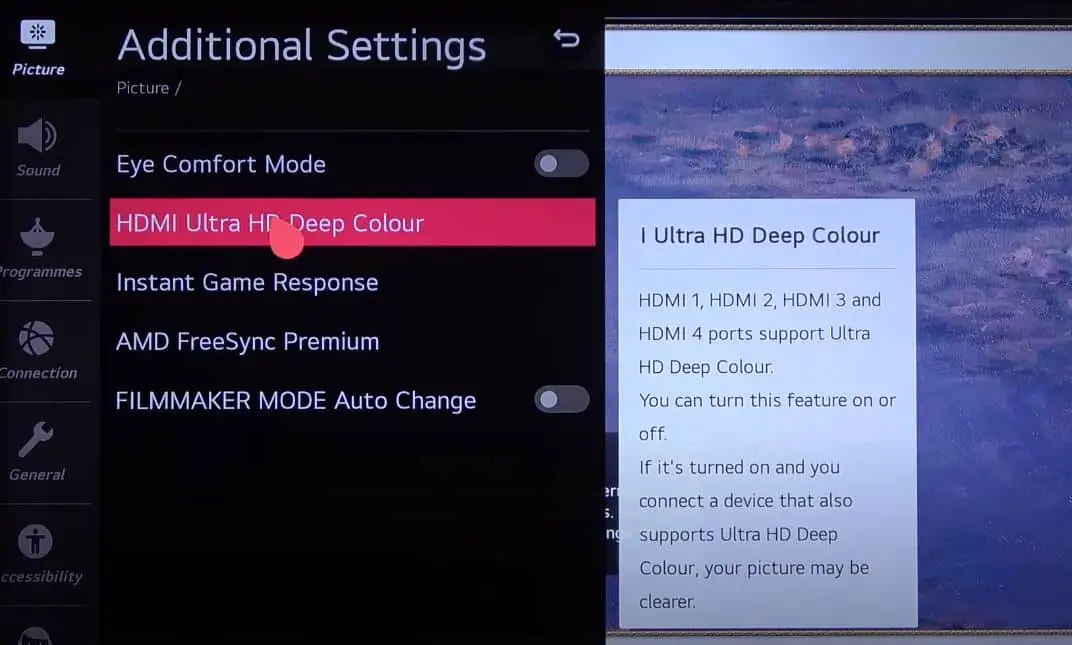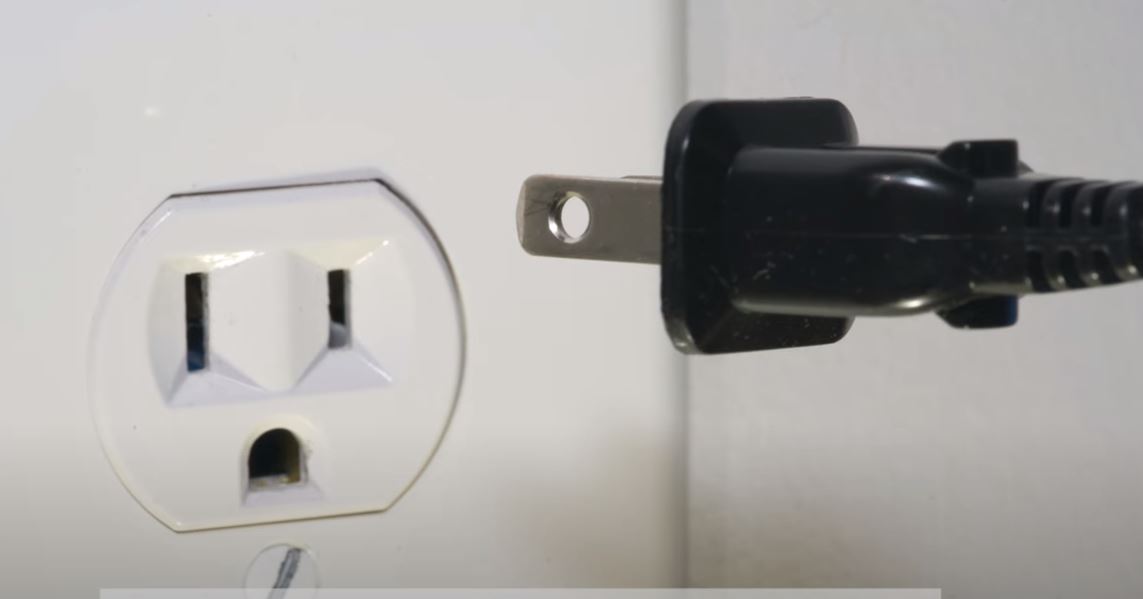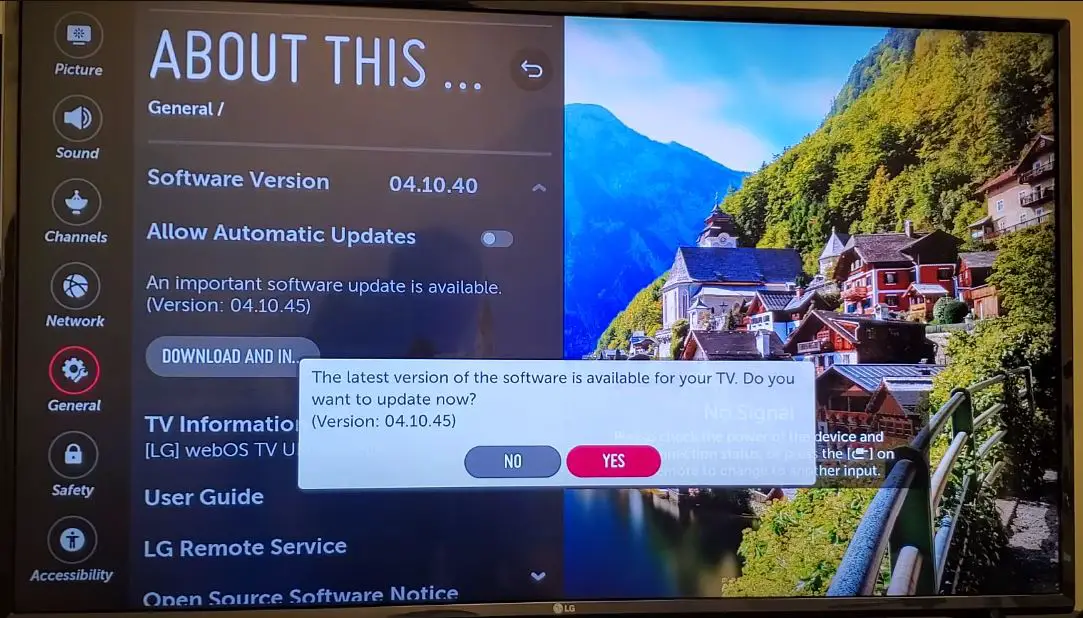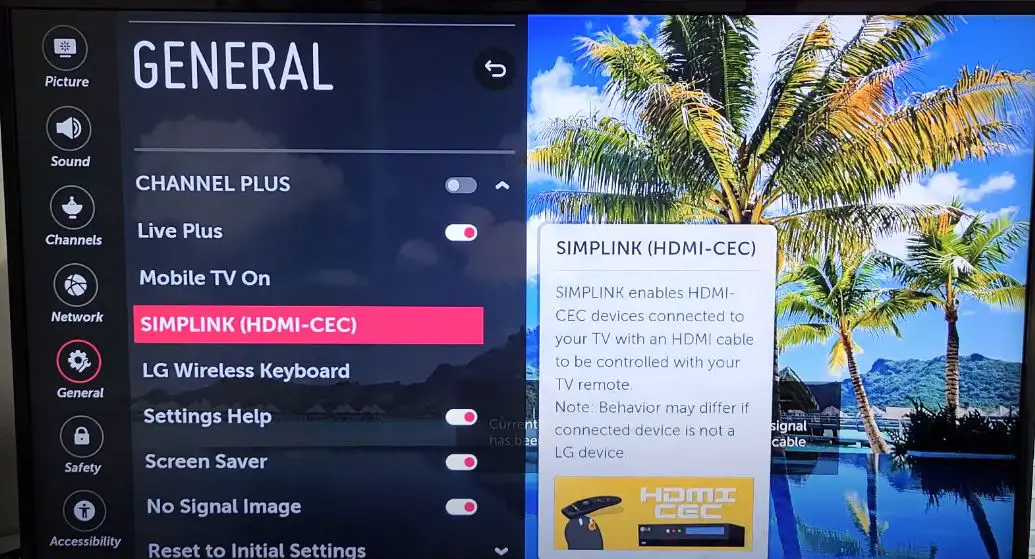Having issues with HDMI connectivity on your LG TV is very frustrating. HDMI problems are quite common with LG TVs and can be unsatisfying to deal with. The good news is that there are several things you can try to get your HDMI ports working again. This article reviews the top fixes for HDMI not working or connecting properly on LG TVs.
LG TV HDMI Not Working or Stopped Recognize: Troubleshooting Steps
Check the HDMI Cable
First, check the cable whenever you have any connectivity issues. Confirm that your HDMI cable is not damaged, bent, or faulty. Try connecting the cable to another device, like a Blu-ray player or game console, to see if it works. If the cable doesn’t work with other devices either, it’s likely defective, and you’ll need to replace it.
Use a high-speed HDMI cable that has been certified by the HDMI organization. Lower quality or older HDMI cables may not work properly with newer 4K TVs. Also, use a shorter HDMI cable, as longer lengths can sometimes introduce issues. Make sure the cable is securely inserted into the ports on both ends. Loose connections or bent pins in the cable/ports can prevent a successful HDMI handshake.
Check Input Source Settings
If you’re sure the HDMI cable is fine, the next thing to check is the input source settings on your LG TV. Press the Input button on your remote to select the correct HDMI input for your connected device. For example, if your cable box is connected to HDMI 1, ensure the TV’s input source is set to HDMI 1.
You also want to check that the connected device is turned on and outputting a video signal. The problem may be with the Blu-ray player, game console, etc., rather than the TV itself. Try connecting a different device to the same HDMI port to isolate where the issue lies.
Toggle HDMI ULTRA HD Deep Color
If you’ve verified your HDMI cable is in good working order, the next step is to check your display settings. Many 4K LG TVs have a setting called HDMI ULTRA HD Deep Color that can cause HDMI problems if enabled incorrectly.
This setting allows the TV to receive a higher range of color and contrast for enhanced 4K picture quality. However, it must be enabled specifically for the port your HDMI device is connected to.
If HDMI ULTRA HD Deep Color is enabled for unused ports, it can disrupt signal transmission on those inputs and cause issues like no video/audio signal.
- To check this setting, access your LG TV’s Settings menu and select Picture > Additional Settings > HDMI ULTRA HD Deep Color.
- You should see options to toggle HDMI ULTRA HD Deep Color On or Off for each individual HDMI port. Make sure it’s enabled only on the port transmitting your HDMI signal.
For all other unused ports, turn HDMI ULTRA HD Deep Color Off. This prevents them from interfering with active HDMI connections.
After adjusting the settings, return to your HDMI input and see if the problem is resolved. Properly configuring HDMI ULTRA HD Deep Color is key for 4K devices.
Power Cycle Your TV
If you’ve checked all cables, input settings, and display options, try power cycling the TV and connected devices.
- Turn off the TV and unplug the cable from the power outlet for 2 minutes.
- It will help to clear any corrupted cached data that could interfere with the HDMI connection.
- After 2 minutes, plug the TV back in and power it on.
Also, unplug the HDMI source device like a Roku or Apple TV and leave it unplugged for 2 minutes as well. Then plug it back into power and reconnect the HDMI cable to the LG TV. Power cycling forces a fresh HDMI handshake, which often resolves connectivity problems.
Update TV Software
Another thing that often helps fix HDMI functionality is updating your LG TV’s firmware. Software updates address bugs and optimize connectivity issues.
- Go to Settings > General > About This TV > CHECK FOR UPDATES to check for the latest firmware.
- If an update is available, select OK to download and install it.
This requires an internet connection. Software updates are one of the easiest ways to improve HDMI operation and compatibility potentially.
HDCP Error Messages
HDCP is the digital copy protection technology built into HDMI. It prevents people from tapping into the HDMI signal and making perfect copies of Blu-rays and streaming video.
If the TV and source device disagree on implementing HDCP, it can cause errors or block content entirely. When this occurs, you may see cryptic error messages on the screen referring to HDCP.
The solution is to try restarting or power cycling both the source and TV, which forces them to re-negotiate the HDCP authentication process. Unplug both devices from power, wait 30+ seconds, and reconnect.
If restarting does not fix HDCP errors, check for firmware updates. HDCP support is implemented in software, so updates can sometimes resolve compatibility issues. Both the TV and source device may need firmware updates to interoperate properly.
Use ARC HDMI Port for Audio Return Channel
One unique feature of HDMI is the Audio Return Channel (ARC). This allows you to send audio from your TV back down the HDMI cable to a home theater receiver or sound system. This avoids needing a separate audio cable alongside your HDMI video connection.
LG TVs only support ARC on specially labeled HDMI ports. Ensure you use the correct HDMI port for the ARC feature when connecting an audio system. Using the wrong port can result in ARC not working properly. ARC problems will manifest as no audio coming from your sound system even though it is connected via HDMI. Check your TV manual for the correct HDMI ARC port.
HDMI-CEC Issues
HDMI-CEC is the technology that allows devices connected via HDMI to control one another. When this feature stops working correctly, it can manifest as HDMI issues.
Check that SIMPLINK (LG’s name for HDMI-CEC) is enabled in your TV’s settings. Also, ensure the CEC features are enabled on any source devices. Consult your device manuals for details, as the setting names vary.
Power cycle the TV and sources to re-establish CEC control. Issues can often be fixed by turning devices completely off and back on, forcing a fresh handshake.
Try connecting CEC devices to a different HDMI port. Some LG TVs have limited CEC functionality on certain ports. Consult your manual to see which ports fully support SIMPLINK.
If CEC misbehaves or if you’d rather disable it entirely, turn off SIMPLINK on your LG TV and CEC controls on your sources. This prevents devices from controlling each other but can resolve instability.
Check External Device Video Output
Don’t forget also to check the settings on the external device you have connected to the LG TV by HDMI. Whether it’s a streaming box, game console, Blu-ray player, or PC, make sure the device’s video output resolution matches the TV’s capabilities.
For example, if you have a newer 4K LG TV, set the external device to output 4K resolution at 60Hz. Or if you have an older 1080p TV, make sure the device isn’t trying to output 4K, which the TV doesn’t support. Incorrect video output settings can prevent HDMI connectivity. Refer to the device’s settings menus and owner’s manual to configure optimal video output for the LG TV.
Replace HDMI Port
Lastly, if you’ve tried absolutely everything else, the HDMI port inside the TV may simply need replacement. This involves opening up the TV, locating the internal HDMI port, removing it, and installing a new replacement port on the board.
Obviously, this requires advanced technical skill as you have to disassemble the TV without damaging any other components. And finding a matching HDMI port replacement part can be challenging. So, this DIY repair approach is best left to experienced technicians.
Factory Reset the TV
If you still can’t get HDMI working, a factory reset should clear out any software bugs or glitches that are preventing connectivity. Just be aware this will erase all your TV’s custom settings, installed apps, and account logins.
- On most LG TVs, you can start a factory reset by going to Settings > General > Reset to Initial Settings.
- Select the Initialize All Settings option, enter the TV’s PIN code if prompted, and confirm the reset.
- The TV will reboot and restore factory defaults. You can then re-configure HDMI settings and reconnect devices.
Contact LG Support
If you’ve tried all of these steps and your LG TV still won’t recognize HDMI devices, it’s time to call in reinforcements.
Contact LG TV technical support with a detailed description of the issues you’re experiencing. Make a note of your full TV model, connected devices, troubleshooting steps taken, and firmware version.
LG support can provide specialized help tailored to your specific TV configuration and issue. They can access diagnostic tools and inside knowledge from working directly on LG products.
Sometimes, HDMI board failures may require service or replacement parts that are only available from the manufacturer. Getting LG support involved early in the process can help diagnose these types of hardware defects.
LG is usually very helpful with thorough troubleshooting and prompt repairs for warranty issues. Don’t hesitate to lean on their expertise if you can’t resolve the problems alone.
Conclusion
So those are the top troubleshooting tips for getting HDMI working again on your LG TV. Start with simpler steps like checking cables, power cycling devices, and updating software. For hardware failures or component damage, professional TV repair may be necessary. But one of these fixes should hopefully resolve those frustrating HDMI problems and get your devices properly connected.
